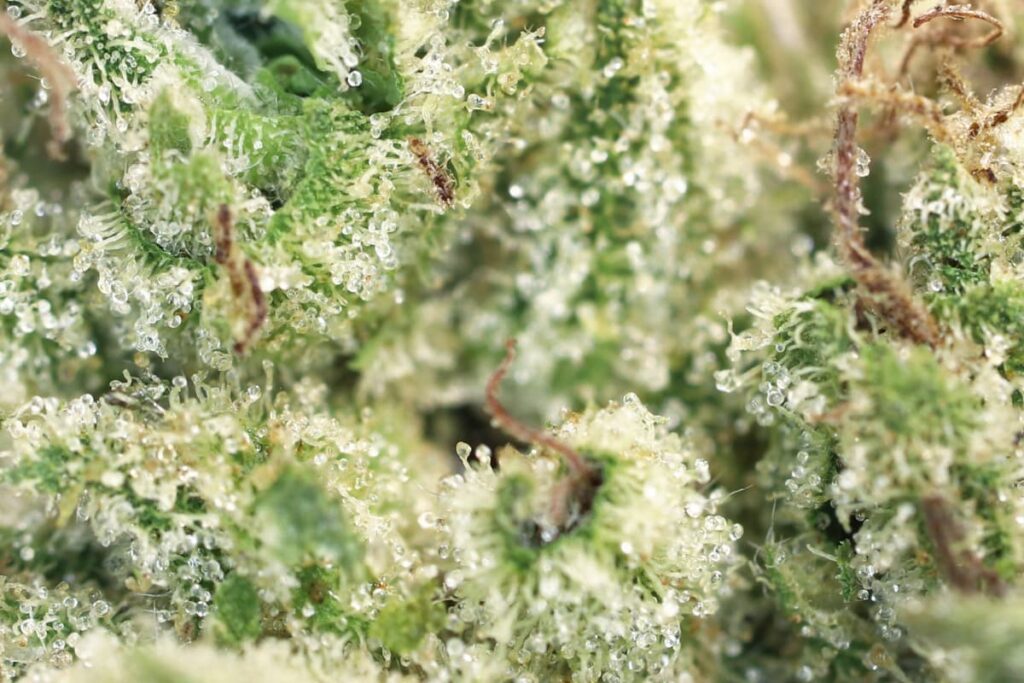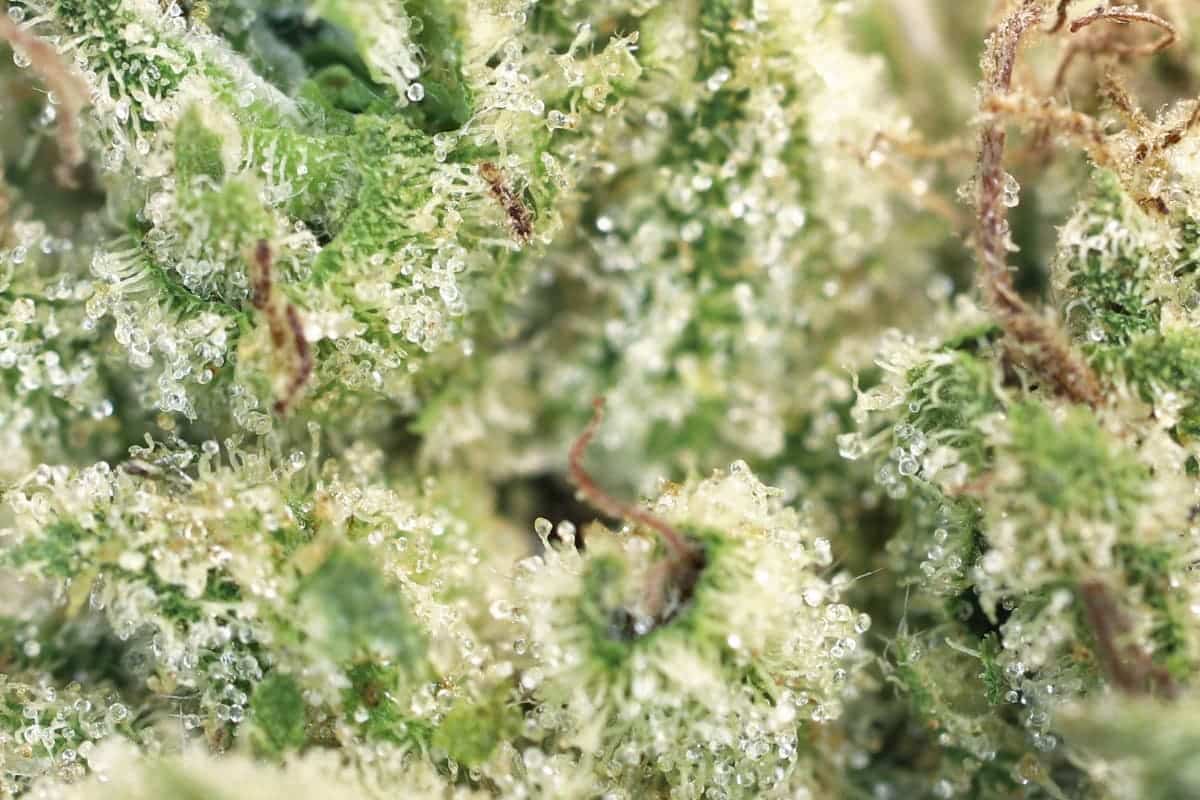A Guide to Terpenes and Their Role in Cannabis
As cannabis legalization has spread around the country, the range of options for cannabis users has expanded. The choice used to be simple: indica or sativa? But today, we have the opportunity to choose between all the plant’s various cannabinoids and terpenes. Most people know that cannabinoids like THC and CBD are important when selecting a strain, but did you know that terpenes may play just as large of a role in determining the plant’s ultimate effects?

What Are Terpenes?
Terpenes are naturally occurring aromatic oils found in plant resins and essential oils. They act as a natural defense mechanism against disease and predators and as a way to communicate with other plants and pollinators. A plant’s terpenes can influence its aroma, flavor and even color.
Terpenes are found in cannabis, where they’re responsible for the unique smells and flavors that characterize different strains. We know of nearly 200 different unique terpenes produced by the cannabis plant. A strain’s terpene profile depends on several factors, including its genetics, growing climate, soil, age and maturation.
How Do Terpenes Impact the Effects of Cannabis?
Terpenes are believed to have a significant impact on the effects of different cannabis strains. Cannabis contains a wide array of compounds, including various cannabinoids, terpenes and other phytochemicals. Each of these components has its own unique properties. They interact with each other and synergize, creating a new spectrum of effects, and non-psychoactive compounds can even sometimes seemingly intensify the plant’s psychoactive effects. This is called the entourage effect: when the behavior of cannabinoids changes in the presence of other phytochemicals, such as terpenes, to influence the overall effect of consuming the plant. This is seemingly why certain strains make you feel relaxed, while others can help you feel energized and focused.
8 Types of Cannabis Terpenes and Their Properties
There are typically more than 100 different terpenes in just one cannabis plant. The most prevalent terpenes in a plant will determine the strain’s effects and qualities. Here are some of the most common terpenes in cannabis:
- Pinene
Imagine you’re taking a hike through a deep pine forest, breathing in the clear and refreshing air around you. That’s where the terpene pinene is most abundant, and its aroma is precisely that: earthy and refreshing, with a hint of piney wood. You can also find this terpene in herbs such as rosemary, parsley and dill. This terpene is typically present in clear-headed cannabis strains that can be used to boost creativity and facilitate physical activity.
Pinene has anti-inflammatory properties, and research shows that it even supports the body’s respiratory functions. It creates an energizing, calming and creative experience. It’s naturally uplifting and can even reduce brain fog caused by high THC strains.
- Myrcene
One of the most abundant terpenes in cannabis, at times making up most of a strain’s terpene profile, myrcene is known for its earthy, musky and herbaceous aroma. In nature, it’s mainly found in cannabis. You may also come across it in herbs and plants such as thyme, hops, mangoes and cloves. If you’ve ever raised an India Pale Ale to your lips and gotten a whiff of cannabis, myrcene is the reason why!
In folk medicine, herbs containing myrcene have been used as sleeping aids for centuries. This powerful terpene has strong sedative and anti-inflammatory effects and may also help relieve pain. It’s good for sleep, pain relief and muscle relaxation, and some believe it’s also one of the main culprits behind “couch lock” in high-THC strains, though more research is needed.
- Caryophyllene
Found in many popular spices such as black pepper, cinnamon or cloves, this terpene is accompanied by a pungent, musky and slightly spicy aroma. It’s known to have anti-anxiety and stress-relieving effects.
Caryophyllene is one of the only terpenes that can interact with CB2 receptors in the endocannabinoid system and is believed to help with CBD absorption. While it doesn’t have euphoric or psychoactive effects, it still offers many therapeutic benefits. This terpene has anti-inflammatory properties and studies on mice found it can help relieve pain, making it good for topical use as well.
- Limonene
This terpene can be found in citrus fruits, such as lemon and grapefruit, and many herbs. It has a fresh citrus scent, with both sweet and tart notes. Limonene has antifungal and antibacterial properties and is known for its energizing and uplifting effects. It’s great for relieving stress, improving your mood and helping you feel recharged. While it’s unclear exactly how limonene’s therapeutic effects come about, studies have found that inhaling this terpene increases serotonin and dopamine levels in the brain.
- Linalool
Linalool has a distinct floral aroma, often with sweet or spicy undertones, and is commonly found in lavender, sage, rosewood and cinnamon. It has calming and anti-anxiety properties, and studies show it may even support your immune system. Linalool has been used in traditional medicine for its sedative effects. Modern research suggests that this terpene can activate the body’s parasympathetic (“rest and digest”) response to help reduce symptoms of stress and anxiety.
- Terpinolene
This terpene is found in lilac, cumin and tea tree oil. It has a smokey herbal aroma with some floral notes and an overall fresh scent. Terpinolene is common in uplifting strains, yet it rarely takes on a dominant role in a strain’s terpene profile. Its effects are energetic and soothing, and it has antibacterial and antifungal properties.
- Humulene
Humulene is present in hops, black pepper and cloves and has a distinct musky and spicy aroma. It’s found in a wide variety of plants and has traditionally been used in Eastern medicine practices. It’s also present in many therapeutic essential oils. Humulene has anti-anxiety and anti-inflammatory effects, and is widely believed to have appetite-suppressing properties. A 2016 study found that this terpene may help stop cancer cells when combined with other phytochemicals.
- Ocimene
This terpene is often used in perfumes and can be found naturally occurring in kumquats, parsley, basil, mangoes and even some orchids. Its scent is sweet and floral with undertones of earthy, herbaceous, peppery flavors. It’s believed to be a natural repellent for pests like aphids, and a 2014 study suggested that ocimene derived from citrus offered significant anti-inflammatory effects. Strains containing ocimene often reportedly give users a giggly, goofy, euphoric high.
How do Terpenes Work for Me?
Terpenes play a considerable role in your cannabis experience. They give the plant its distinctive aroma and taste, and they affect its impact on you through the entourage effect. To understand which terpenes work best for you, pay close attention to the dominant terpenes present in each specific strain. You can also choose strains based on their terpene profiles if you’re looking for a specific type of experience—relaxing, energizing, sedative or grounding. With so much variety in cannabis, there’s a strain for every occasion.
If you need any guidance, feel free to reach out and ask for help. You can come chat with us in person or schedule a free phone consultation!
Sources:
Bahi, Amine, et al. “β-Caryophyllene, a CB2 Receptor Agonist Produces Multiple Behavioral Changes Relevant to Anxiety and Depression in Mice.” Physiology & Behavior, vol. 135, Aug. 2014, pp. 119–24. PubMed, https://doi.org/10.1016/j.physbeh.2014.06.003.
Chioca, Lea R., et al. “Anxiolytic-like Effect of Lavender Essential Oil Inhalation in Mice: Participation of Serotonergic but Not GABAA/Benzodiazepine Neurotransmission.” Journal of Ethnopharmacology, vol. 147, no. 2, May 2013, pp. 412–18. PubMed, https://doi.org/10.1016/j.jep.2013.03.028.
“Anxiolytic-like Effect of Lavender Essential Oil Inhalation in Mice: Participation of Serotonergic but Not GABAA/Benzodiazepine Neurotransmission.” Journal of Ethnopharmacology, vol. 147, no. 2, May 2013, pp. 412–18. PubMed, https://doi.org/10.1016/j.jep.2013.03.028.
do Vale, T. Gurgel, et al. “Central Effects of Citral, Myrcene and Limonene, Constituents of Essential Oil Chemotypes from Lippia Alba (Mill.) n.e. Brown.” Phytomedicine: International Journal of Phytotherapy and Phytopharmacology, vol. 9, no. 8, Dec. 2002, pp. 709–14. PubMed, https://doi.org/10.1078/094471102321621304.
Fidyt, Klaudyna, et al. “Β‐caryophyllene and Β‐caryophyllene Oxide—Natural Compounds of Anticancer and Analgesic Properties.” Cancer Medicine, vol. 5, no. 10, Sept. 2016, pp. 3007–17. PubMed Central, https://doi.org/10.1002/cam4.816.
Han, Yingjie, et al. “Antimicrobial Susceptibility and Antibacterial Mechanism of Limonene against Listeria Monocytogenes.” Molecules, vol. 25, no. 1, Dec. 2019, p. 33. PubMed Central, https://doi.org/10.3390/molecules25010033.
Heuberger, Eva, et al. “Transdermal Absorption of (−)-Linalool Induces Autonomic Deactivation but Has No Impact on Ratings of Well-Being in Humans.” Neuropsychopharmacology, vol. 29, no. 10, Oct. 2004, pp. 1925–32. www.nature.com, https://doi.org/10.1038/sj.npp.1300521.
Horváth, Béla, et al. “β-Caryophyllene Ameliorates Cisplatin-Induced Nephrotoxicity in a Cannabinoid 2 Receptor-Dependent Manner.” Free Radical Biology and Medicine, vol. 52, no. 8, Apr. 2012, pp. 1325–33. ScienceDirect, https://doi.org/10.1016/j.freeradbiomed.2012.01.014.
Jansen, C., et al. “Myrcene and Terpene Regulation of TRPV1.” Channels, vol. 13, no. 1, Aug. 2019, pp. 344–66. PubMed Central, https://doi.org/10.1080/19336950.2019.1654347.
Kim, Dae-Seung, et al. “Alpha-Pinene Exhibits Anti-Inflammatory Activity Through the Suppression of MAPKs and the NF-ΚB Pathway in Mouse Peritoneal Macrophages.” The American Journal of Chinese Medicine, vol. 43, no. 4, 2015, pp. 731–42. PubMed, https://doi.org/10.1142/S0192415X15500457.
Kim, Min-Jin, et al. “Chemical Composition and Anti-Inflammation Activity of Essential Oils from Citrus Unshiu Flower.” Natural Product Communications, vol. 9, no. 5, May 2014, pp. 727–30.
Klauke, A. L., et al. “The Cannabinoid CB₂ Receptor-Selective Phytocannabinoid Beta-Caryophyllene Exerts Analgesic Effects in Mouse Models of Inflammatory and Neuropathic Pain.” European Neuropsychopharmacology: The Journal of the European College of Neuropsychopharmacology, vol. 24, no. 4, Apr. 2014, pp. 608–20. PubMed, https://doi.org/10.1016/j.euroneuro.2013.10.008.
Komiya, Migiwa, et al. “Lemon Oil Vapor Causes an Anti-Stress Effect via Modulating the 5-HT and DA Activities in Mice.” Behavioural Brain Research, vol. 172, no. 2, Sept. 2006, pp. 240–49. PubMed, https://doi.org/10.1016/j.bbr.2006.05.006.
Linalool: an Overview | ScienceDirect Topics. https://www.sciencedirect.com/topics/neuroscience/linalool. Accessed 4 Feb. 2022.
Nam, Sun-Young, et al. “The Therapeutic Efficacy of α-Pinene in an Experimental Mouse Model of Allergic Rhinitis.” International Immunopharmacology, vol. 23, no. 1, Nov. 2014, pp. 273–82. PubMed, https://doi.org/10.1016/j.intimp.2014.09.010.
Pamplona, Fabricio A., et al. “Potential Clinical Benefits of CBD-Rich Cannabis Extracts Over Purified CBD in Treatment-Resistant Epilepsy: Observational Data Meta-Analysis.” Frontiers in Neurology, vol. 9, Sept. 2018, p. 759. PubMed Central, https://doi.org/10.3389/fneur.2018.00759.
Paula-Freire, Lyvia Izaura Gomes, et al. “Ocimum Gratissimum Essential Oil and Its Isolated Compounds (Eugenol and Myrcene) Reduce Neuropathic Pain in Mice.” Planta Medica, vol. 82, no. 3, Feb. 2016, pp. 211–16. PubMed, https://doi.org/10.1055/s-0035-1558165.
Rogerio, Alexandre P., et al. “Preventive and Therapeutic Anti-Inflammatory Properties of the Sesquiterpene α-Humulene in Experimental Airways Allergic Inflammation.” British Journal of Pharmacology, vol. 158, no. 4, Oct. 2009, pp. 1074–87. PubMed Central, https://doi.org/10.1111/j.1476-5381.2009.00177.x.
Russo, Ethan B. “Taming THC: Potential Cannabis Synergy and Phytocannabinoid-Terpenoid Entourage Effects.” British Journal of Pharmacology, vol. 163, no. 7, Aug. 2011, pp. 1344–64. PubMed Central, https://doi.org/10.1111/j.1476-5381.2011.01238.x.

